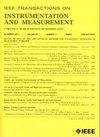Clustering Federated Learning for Wafer Defects Classification on Statistical Heterogeneous Data
IF 5.6
2区 工程技术
Q1 ENGINEERING, ELECTRICAL & ELECTRONIC
IEEE Transactions on Instrumentation and Measurement
Pub Date : 2024-09-05
DOI:10.1109/TIM.2024.3415785
引用次数: 0
Abstract
Data-driven deep learning techniques for wafer defect image classification provide wafer manufacturers with a tool to rapidly identify surface defects. However, the defect data and computational capabilities of a single wafer manufacturer are often insufficient to support the training of deep learning models. In response, we introduce federated learning (FL), a paradigm that leverages the data and computational capabilities of various wafer manufacturers, all while ensuring that the original data from different manufacturers remain unexposed to each other. Due to variations in manufacturing processes and image acquisition equipment, identical wafer defects can exhibit different features in different manufacturing settings, leading to statistically heterogeneous datasets. This heterogeneity can reduce model convergence speed and accuracy. To counteract this issue, we propose a personalized FL approach with clustering. In the personalization phase, we train distinct network layers for each client’s local model, capitalizing on the feature extraction capability of the global model’s shallow network, while also achieving commendable performance on each client’s unique dataset. During the clustering phase, we provide a theoretical analysis, demonstrating that the divergence of weights between two models is bounded above, laying a theoretical foundation for the clustering operation. We then enhance a density-based clustering method, enabling the clustering of clients with similar data features without the need to specify the number of cluster centers, thus mitigating the problem of global model oscillation. We have conducted experiments under various data heterogeneity scenarios. The experiments show that our method can achieve a 2.8% accuracy improvement average versus the compared state-of-the-art federated methods with a faster convergence rate.在统计异构数据上进行晶圆缺陷分类的聚类联合学习
用于晶片缺陷图像分类的数据驱动深度学习技术为晶片制造商提供了快速识别表面缺陷的工具。然而,单个晶片制造商的缺陷数据和计算能力往往不足以支持深度学习模型的训练。为此,我们引入了联合学习 (FL),这是一种利用不同晶片制造商的数据和计算能力的范例,同时确保不同制造商的原始数据互不影响。由于制造工艺和图像采集设备的不同,相同的晶片缺陷在不同的制造环境中会表现出不同的特征,从而导致统计上的数据集异质性。这种异质性会降低模型的收敛速度和准确性。为了解决这个问题,我们提出了一种具有聚类功能的个性化 FL 方法。在个性化阶段,我们为每个客户的本地模型训练不同的网络层,利用全局模型浅层网络的特征提取能力,同时在每个客户的独特数据集上实现值得称道的性能。在聚类阶段,我们进行了理论分析,证明了两个模型之间的权重发散是有边界的,为聚类操作奠定了理论基础。然后,我们改进了一种基于密度的聚类方法,无需指定聚类中心的数量,即可对具有相似数据特征的客户端进行聚类,从而缓解了全局模型振荡的问题。我们在各种数据异构场景下进行了实验。实验结果表明,我们的方法与同类最先进的联合方法相比,平均准确率提高了 2.8%,而且收敛速度更快。
本文章由计算机程序翻译,如有差异,请以英文原文为准。
求助全文
约1分钟内获得全文
求助全文
来源期刊

IEEE Transactions on Instrumentation and Measurement
工程技术-工程:电子与电气
CiteScore
9.00
自引率
23.20%
发文量
1294
审稿时长
3.9 months
期刊介绍:
Papers are sought that address innovative solutions to the development and use of electrical and electronic instruments and equipment to measure, monitor and/or record physical phenomena for the purpose of advancing measurement science, methods, functionality and applications. The scope of these papers may encompass: (1) theory, methodology, and practice of measurement; (2) design, development and evaluation of instrumentation and measurement systems and components used in generating, acquiring, conditioning and processing signals; (3) analysis, representation, display, and preservation of the information obtained from a set of measurements; and (4) scientific and technical support to establishment and maintenance of technical standards in the field of Instrumentation and Measurement.
文献相关原料
| 公司名称 | 产品信息 | 采购帮参考价格 |
|---|
 求助内容:
求助内容: 应助结果提醒方式:
应助结果提醒方式:


